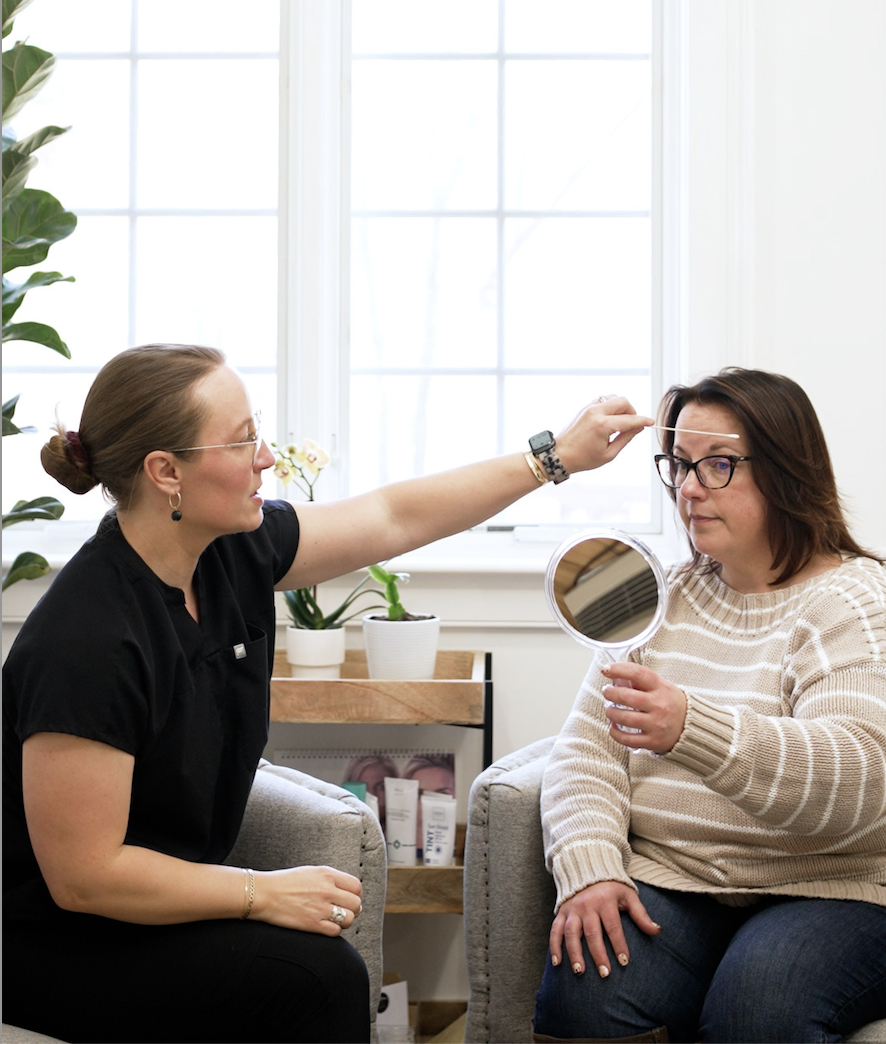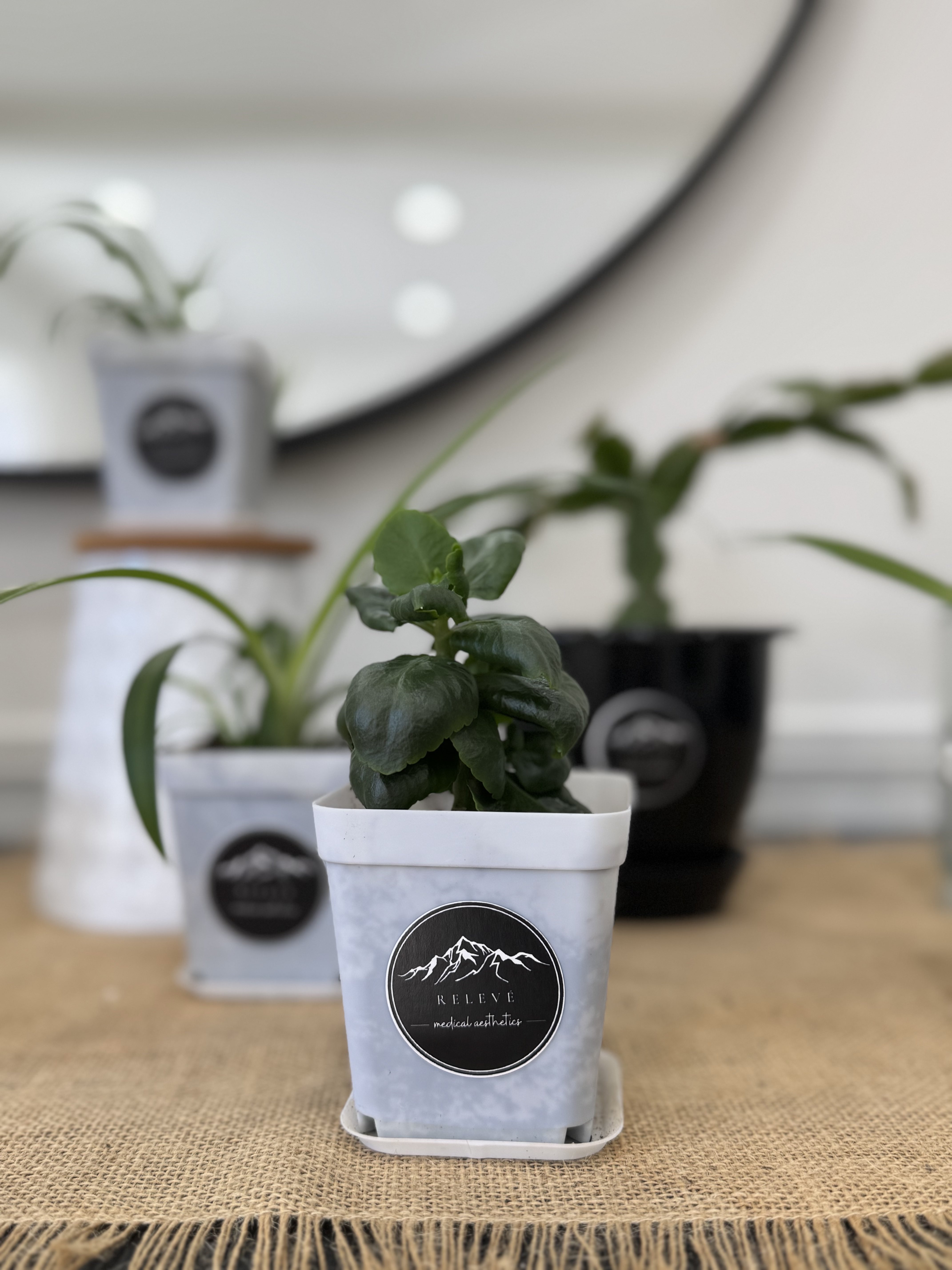



If you’ve ever had a zit you know it’s a BIG DEAL. Obviously kids are often plagued with acne, but throughout life stages, adult women also frequently deal with bouts of it, and I can tell you they are just as bothered by it as their teenage counterparts. The skincare industry wants you to think its treatment is a mystery you’ll solve if you just buy one more product, but the reality is there's a lot you can do to minimize the severity of your acne, and skincare is just part of it.
(By the way--if your high school or college age kid is noticing an uptick in acne since starting back at school, send them this blog post to give them the tools to manage it for the rest of their life!)
All acne has four contributing elements; think of these like the legs of a table. If you chop down a few, you’ll knock the table over. In the following paragraphs, I’m going to break down several ways you can adjust your lifestyle (and skincare products) to chop down some table legs.
Element #1: Bacteria
Most acne is caused by the P. acnes bacteria which lives normally on our skin and feeds off healthy oils on our skin. In people with active acne, this bacteria is having a little too much fun and causing a problem.
The first recommendation I make for most acne sufferers is to begin using a benzoyl peroxide face wash (you can get this for about $10 at the store or on Amazon). This change alone reduces about 50% of acne I see in my practice. I like benzoyl peroxide, because unlike antibiotics (either topical or taken by pill) it cannot lead to bacterial resistance. It simply kills bacteria and that’s that. I prefer the cleanser option over a cream that you leave on, because the cream will bleach fabrics (but the cream works if you’re happy with it).
There are also several (cheap!) lifestyle adjustments you can make to reduce the amount of bacteria on your skin: change your pillowcase every few nights, avoid touching your face or resting your chin in your hands, sanitize your phone regularly and avoid holding it up against your cheek, after cleansing dry your face with a separate clean towel.
Element #2: Inflammation
Inflammation is a chicken-or-egg scenario. Do you have inflammation because you have bacteria, or did bacteria get stuck because you had inflammation? Probably both. In any case, reducing general inflammation will help. One of the most impactful lifestyle changes for acne is reducing inflammatory foods (not eliminating them!). The most common one is dairy, especially when you’re consuming a lot of it in the form of whey protein or protein-enriched foods. For a lot of teen boys who are trying to put on muscle, whey protein shakes spell doom for their faces. Other triggering foods are chocolate and sweets. I don’t recommend eliminating anything from your diet, because that’s not usually sustainable, but try to minimize it.
Skincare ingredients can also help reduce inflammation in your skin. The gold standard for treatment of acne is vitamin A, also known as retinol or tretinoin. Vitamin A is a vacuum for bad guys in your skin, so I do recommend using some form of it. However, not everyone needs or can tolerate tretinoin, which is pure retinoic acid. It can cause redness, burning and flaking, which causes more–you guessed it–inflammation! Better to be on a gentle vitamin A to start, give your skin the nutrition it needs, and build up to more potent forms over time. Other helpful ingredients for inflammation are vitamins C and E, and azelaic acid.
Element #3: Clogged pores
Put down the scrub, though! Exfoliation is important to prevent dead skin cells from clogging pores, but scrubbing with scratchy stuff is not the answer. That means no gritty scrubs (for the most part), no scrubby pads, etc. Using gentle ingredients in skincare to evenly and carefully exfoliate will prevent pore clogging without causing redness or inflammation (remember Element #2!). My favorite ingredient for this is glycolic acid. It’s well tolerated and gives your skin a gorgeous glow.
A note on pores–please don’t squeeze or try to express the little black dots you see on your nose, cheeks and chin. These are called sebaceous filaments and they are supposed to be there. They are little wicks for oil to bring it to the skin surface for proper moisture. If you express them you will cause inflammation and they will just come back. They turn dark when the oil is exposed to oxygen by a process called oxidation. The darkness will be less visible when you use chemical exfoliants like glycolic acid.
Free lifestyle changes you can make to reduce pore clogging and keep your skin glowing are cleansing twice daily, drinking enough water, and reducing alcohol intake. These will especially help during the seasonal changes we experience in southern New Hampshire. Going from humid summers at Lake Winni to freezing winters at the top of a ski mountain can give your skin whiplash, so keep it hydrated and gently exfoliated.
Element #4: Hormones
Want to know how to make a hormone? Refuse to pay her. Just kidding. That’s my dad’s joke. All acne has a hormonal component. I hear a lot of people saying “jawline acne is due to hormones,” and I kinda think that’s bunk. All acne is due to fluctuations in hormones. I don’t generally recommend going on or off birth control to try to control acne, because that decision has a lot of components. However, there are other medications like spironolactone that can help reduce the hormonal effects on acne. This is the reason that women often have changes in their acne experience at times of major hormonal fluctuation–puberty, pregnancy, end of lactation, and perimenopause.
Other treatments
If you’ve got a bad case of acne and want to get it under control as quickly as possible, consider having a chemical peel. You can either do a series of weekly superficial chemical peels, which will not cause your skin to visibly peel, and may be the best option for teens or college age kids who don’t want lifestyle interruptions. Or you can do a medium depth chemical peel, which will cause your skin to visibly peel 3-5 days after it’s placed. Both options can significantly reduce your acne in the space of about a month.
If you or your teen are struggling with acne, book a free consultation today!


